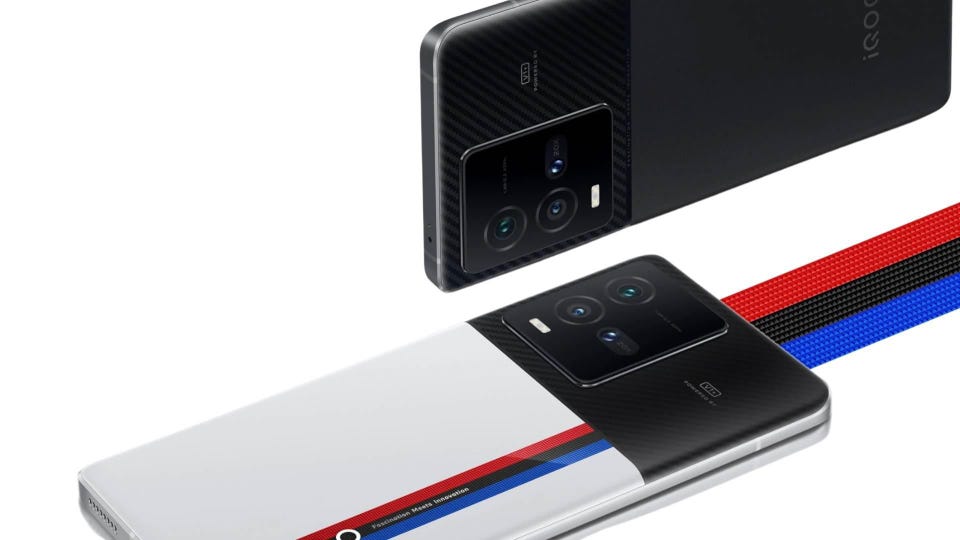Asia Vivo Brings The Low-Light Magic To Its Mid-Tier iQoo 9T Ben Sin Contributor Opinions expressed by Forbes Contributors are their own. I cover consumer tech in Asia Following New! Follow this author to stay notified about their latest stories. Got it! Sep 12, 2022, 09:15pm EDT | Share to Facebook Share to Twitter Share to Linkedin Product renders of the iQoo 9T iQoo Vivo doesn’t have the household name recognition of an Apple or Samsung, and it isn’t even as well known in the west as fellow Chinese brands Xiaomi or Huawei.
But those who follow the Android scene closely know Vivo has been on a roll, pumping out flagship phones with camera capabilities that have garnered acclaim from reviewers. In fact, I think Vivo’s X80 Pro has the best main camera of any phone right now—better than anything Apple, Samsung, or even Google have to offer. Part of the reason for Vivo’s camera breakthrough—the X80 Pro excels in HDR shots of high contrast scenes—is because the company has been using powerful optics, with large image sensors and Zeiss T-coating.
But perhaps more importantly, the reason for the X80 Pro’s camera excellence is due to Vivo’s self-developed V1+ imaging chip, which allows the company to control the entire image processing pipeline in ways, say, even Samsung cannot. Now Vivo’s brought that imaging chip to a mid-tier phone under its quirkily named sub-brand iQoo (pronounced “eye coo”). The iQoo 9T sells mainly in Southeast Asia for now, including the fast growing India market, at about the equivalent of $630.
Not cheap, but not exactly expensive by 2022 smartphone standards, either. For this price, you get a phone that could pass for a top tier four-digit-priced flagship for most people. The 9T has a brilliant 6.
7-inch OLED display with a refresh rate up to 120Hz, the newest Qualcomm Snapdragon 8 Plus Gen 1 chip, a two-tone glass back design that comes in either black or white with BMW’s iconic stripes (yes, iQoo partnered with BMW for the model). The BMW variant is the headliner, but I find its look garish, and much prefer the black model. The iQoo 9T in black.
Darren Jung MORE FOR YOU China Detains Fallen HNA Ex-Billionaire Chairman Ahead Of Airline Restructuring Vote Nasdaq Listing Of Freshworks Creates Windfall For Indian Founder And Hundreds Of Employees Ninja Van Becomes Singapore’s Newest Unicorn After Raising $578 Million From Alibaba, B Capital The phone also packs a camera system headlined by a 50-megapixel, f/1. 9 GN5 image sensor with a relatively large 1/1. 5-inch image sensor, images captured by this camera are processed by the aforementioned V1+ imaging chip.
These are all top components, and the phone and perform at a top level. Dig a bit deep, and those who know their smartphone hardware will be able to spot what keeps this phone from being a flagship—there’s no wireless charging, no water resistance, and 12-megapixel telephoto zoom lens and 13-megapixel ultra-wide are solid but unspectacular. Still, at this $630 price, it’s a fair compromise.
The iQoo 9T’s display Darren Jung The parts that work well, the iQoo 9T excels. The Snapdragon 8 Plus Gen 1 chip is the most powerful in the Android space, and it is highly efficient, which gives the 9T’s 4,700 mAh battery long lasting endurance—this phone can go a full 13-hour day with some juice to spare. The brand also includes a super fast 120W charger that tops up the phone from dead battery to 100% in 20 minutes.
But what sets the 9T apart is that main camera performance. The 50-megapixel sensor shoots pixel-binned 12. 5-megapixel photos with four times more details than usual, the large image sensor takes in a lot of light so even night shots are noise free, and the V1+ image chip can find proper exposure in almost any lighting condition.
In both photo samples below, the 9T was able to properly expose all the lights and produce a well-balanced, noise-free image, even though lighting situations in both were not great. A night image captured by the iQoo 9T. Ben Sin An image captured by the iQoo 9T.
Ben Sin Elsewhere, the iQoo 9T packs stereo speakers, and runs on Vivo’s version of Android 12, which is fine. Vivo’s software, named FunTouch, is not my favorite Android skin—I find its aesthetic a bit outdated, and missing some shortcut gestures seen in Samsung or Xiaomi’s version of Android. But it’s functional and perfectly fine.
Performance is top notch. The phone zips around without hiccups, and the “Vapor Chamber Liquid Cooling System” (a copper cooling plate) is larger than in many phones at this price range, and keeps the phone from running too hot, even when playing intense games. Overall, there’s not much to nitpick with the iQoo 9T at this price.
Would I have liked a better zoom lens? Sure, but phones that have a better zoom lens usually cost a bit more. For what it is, the iQoo 9T is an upper mid-ranger that punches above its weight class, thanks to the V1+ imaging chip passed down by Vivo. If you can pay a bit more, however, you should still get the Vivo X80 Pro, because it has all the strengths of this phone plus a superior zoom lens and ultra-wide.
Whatever the case, Vivo’s camera game in 2022 continues to be top notch. Follow me on LinkedIn . Check out my website or some of my other work here .
Ben Sin Editorial Standards Print Reprints & Permissions.
From: forbes
URL: https://www.forbes.com/sites/bensin/2022/09/12/vivo-brings-the-low-light-magic-to-its-mid-tier-iqoo-9t/



